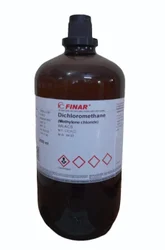Dichloromethane

Dichloromethane, also known as methylene chloride, is a colorless, volatile liquid with a mild, sweet odor. It is a solvent that is used in a variety of industrial applications, including:
- Manufacturing: Dichloromethane is used in the production of urethane foam, plastic, polycarbonate resins, and ink.
- Chemical research: Dichloromethane is a common solvent in chemical research.
- Paint and lacquer stripping: Dichloromethane was previously the main component of many paint and lacquer strippers.
- Food industry: Dichloromethane is used to extract spices, caffeine, and hops.
Dichloromethane is produced by chlorinating methane or reacting hydrogen chloride with methanol. It is chemically stable, but it can be hazardous to human health:
-
Inhalation
Inhaling dichloromethane can cause drowsiness, respiratory tract irritation, and even death.
-
Skin and eye irritation
Dichloromethane can irritate the skin and eyes, especially if evaporation is prevented. Prolonged contact can cause chemical burns.
-
Carcinogenicity
Dichloromethane is considered a probable human carcinogen by several regulatory agencies.
-
Carbon monoxide poisoning
Dichloromethane is metabolized by the body to carbon monoxide, which can lead to carbon monoxide poisoning.
In the EU, the use of dichloromethane in paint and lacquer strippers has been restricted, and benzyl alcohol is now used as a safer alternative.
